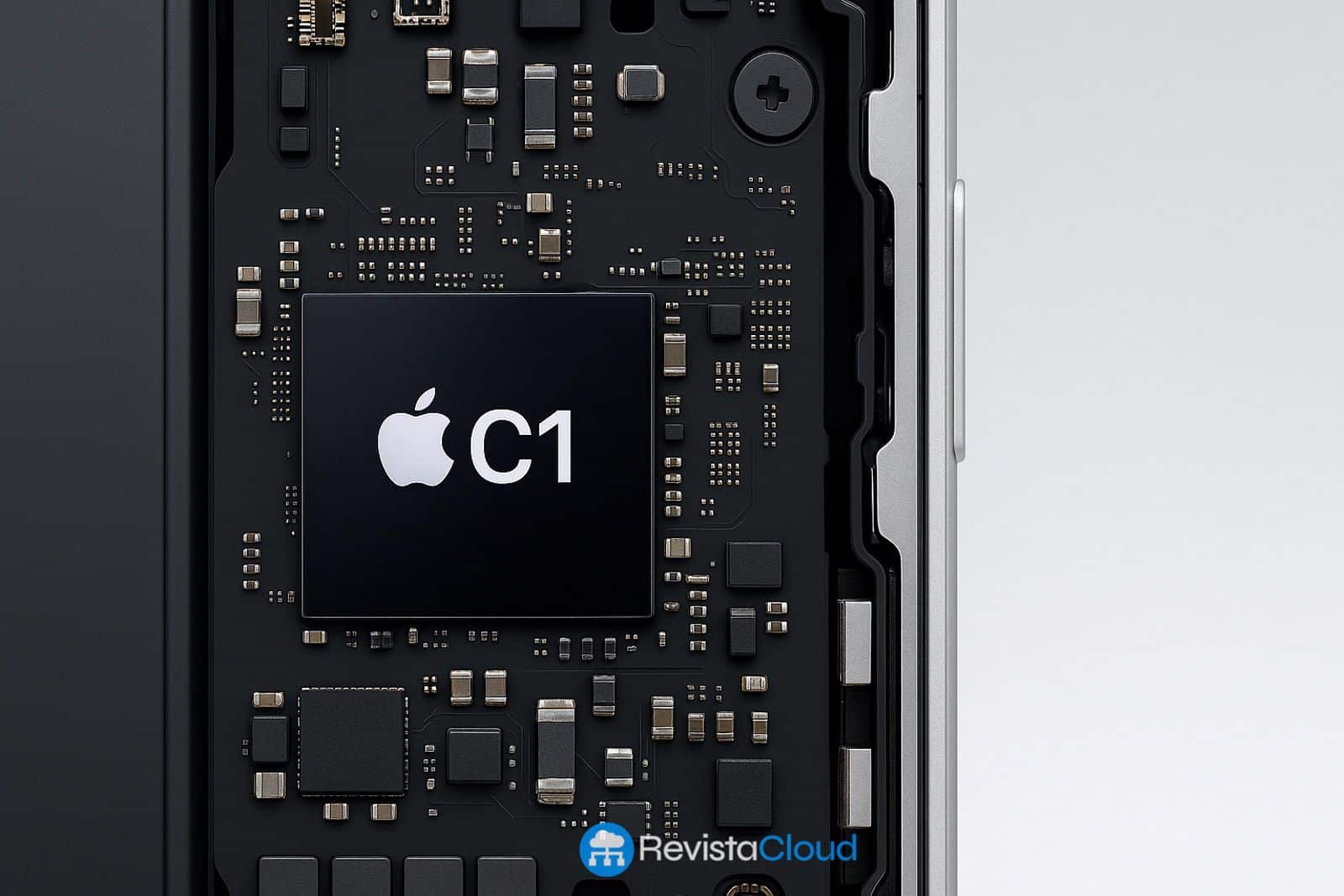Cupertino’s tech giant is advancing with its custom modems and plans to stop using Qualcomm chips by 2027.
The relationship between Apple and Qualcomm is numbered. The company led by Tim Cook has made its intention clear to completely eliminate the use of Qualcomm’s 5G modems starting in March 2027, when the current contract between the two tech giants expires. This move threatens to cut more than $5.7 billion annually in revenue for Qualcomm, a figure that represents a significant part of its current business in the mobile connectivity segment.
The iPhone 16e, launched this year, marks the beginning of this split by incorporating the C1, the first modem developed by Apple, which has already surpassed Qualcomm’s solutions in speed and efficiency in real-world tests. According to Qualcomm’s own forecasts, its presence in iPhone models will decrease drastically: from the current 70% to 20% by 2026, and will completely disappear in 2027.
Qualcomm downplays the impact and seeks to diversify
In recent statements made on Yahoo Finance’s Opening Bid podcast, Qualcomm’s CEO, Cristiano Amon, attempted to downplay the end of the agreement with Apple. “There’s too much drama surrounding our relationship with Apple, which in my opinion is unjustified,” he stated. Amon acknowledged that the current contract defines the limits of collaboration and that if it’s not renewed, new business opportunities are already being explored.
Qualcomm, which has been a long-time supplier for Apple, is currently immersed in a diversification strategy aimed at connected automotive, Internet of Things (IoT), and AI server chips, segments where it seeks to compete with giants like NVIDIA. This diversification will be key to offset the revenue decline following the loss of the smartphone sector’s most valuable client.
Apple C2: the next step in connectivity
The development of the C1’s successor, dubbed C2, is already underway. It is expected to offer significant improvements in speed, latency, and energy consumption. According to leaks, the C1 will also be featured in the iPhone 17 Air, the ultra-thin model Apple plans to launch in September this year, and work is also underway on a future integration of the custom modem into MacBook laptops.
Apple’s initiative is part of a long-term strategy to control the design of its key components, similar to what it previously did with its Apple Silicon (M1, M2, and M3) chips. This technological independence not only gives it more control over hardware but also enhances energy efficiency and reduces dependence on third parties amid uncertain geopolitical situations.
A new era for the industry
Apple’s exit from Qualcomm’s ecosystem is not just an economic blow, but also a symbolic one. It marks the end of an era in which the Californian manufacturer relied on others for critical functions like mobile connectivity. Apple’s increasing autonomy highlights a paradigm shift in the semiconductor industry, where major tech integrators—such as Apple or Google—are increasingly betting on customized solutions designed and optimized for their products.
It remains to be seen how this transition will affect Qualcomm’s positioning in the global market. While its expansion efforts appear promising, the trust factor—crucial in the chip business—and the loss of a client as significant as Apple pose important challenges for the American company.
The battle for technological sovereignty is once again being fought inside a chip.

